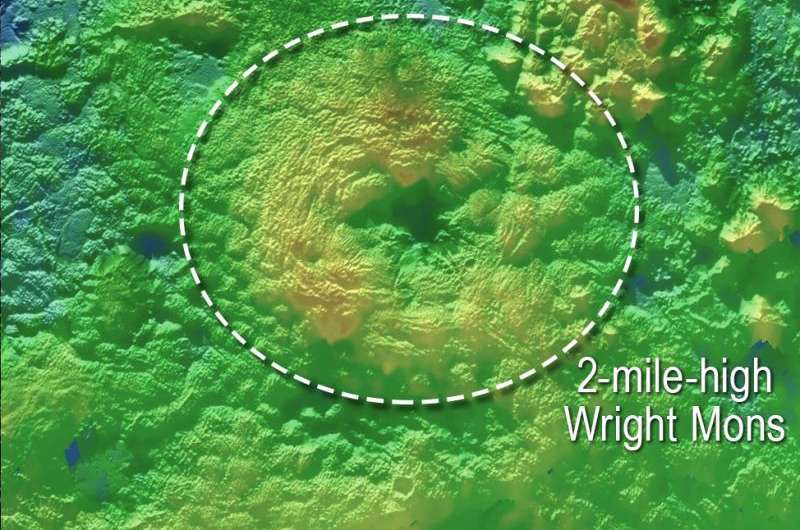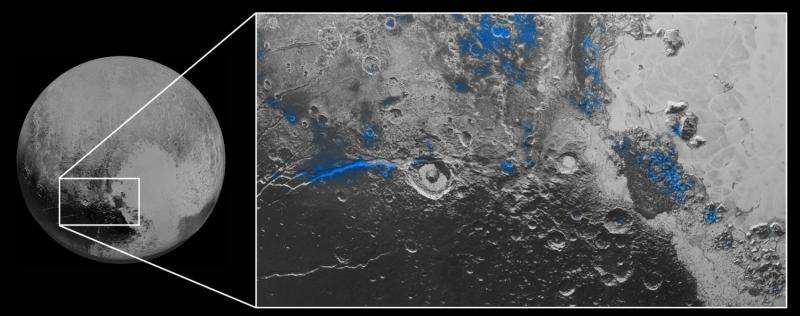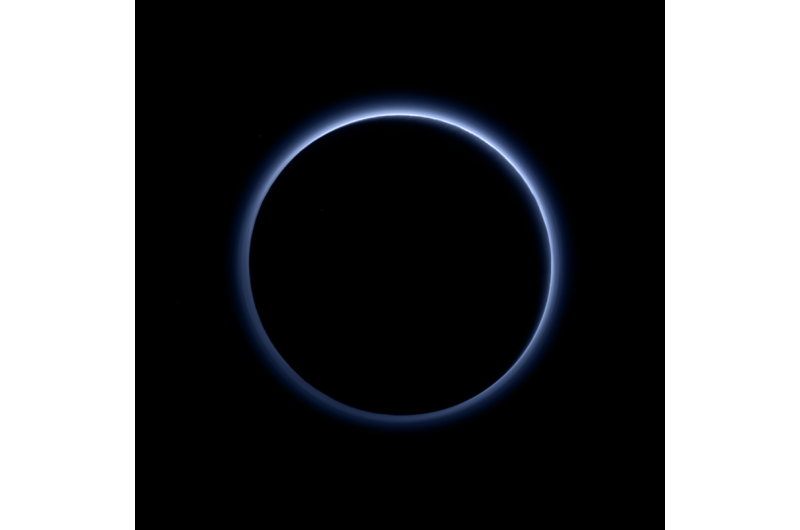Neil deGrasse Tyson weighs in on New Horizons' Pluto discoveries

The New Horizons spacecraft completed its 3 billion mile journey to Pluto in July and the discoveries continue to pour in every week as NASA scientists receive and analyze data and images from the flyby. It will be another year before scientists on Earth receive the last of the data cache from the decade-long mission.
Some of the dozens of recent discoveries were shared last week at the 47th Annual Meeting of the American Astronomical Society's Division for Planetary Sciences. Of note was evidence that two of Pluto's highest mountains may be recently active cryovolcanos, or ice volcanoes. Instead of spewing lava and magma like Earth's volcanoes, they erupt a melted cocktail of water ice, nitrogen, ammonia or methane particles. And there are other aspects of Pluto's surface features that tell a compelling story about its past.
The age of a planet's surface area directly correlates to the number of impact craters. By counting thousands of impact craters, New Horizons scientists have found regions ranging in age from 4 billion years to a freshly-formed 10 million years old, indicating that the dwarf planet has been alive with geological activity throughout much of its existence.
The most publicized (and perhaps romanticized) discoveries, announced last month, are water-ice deposits on the surface and a stunning blue sky reminiscent of Earth's own atmosphere.
Astrobiology Magazine sat down with astrophysicist and Hayden Planetarium director Neil deGrasse Tyson to get his take on these findings. He's the author of The Pluto Files and a famed accomplice in the demotion of Pluto from its prior planet status, a deed yielding him endless hate mail from elementary school children. It seems inevitable that each time NASA publishes a captivating discovery from the New Horizons mission, people, possessed by a nostalgia of the nine-planet solar system models of their youth, attempt to tout the findings as evidence that Pluto is, in fact, a planet.
In this interview, Tyson reminds us why, precisely, Pluto remains unqualified as a planet (no matter what new discoveries are made) and why that doesn't dampen his interest in the King of the Kuiper Belt. "Some of the most interesting places in the Solar System are not planets at all," he said. And he insists that Pluto's blue sky, although interesting, is a bit over-celebrated.
Neil deGrasse Tyson (NDT): We've seen some cool results recently with Pluto in regard to the water-ice discovered on the surface as well as its kind-of blue haze. I think people have overstated this notion of a blue sky. People presume that it's as though if you were on Pluto looking up in broad daylight with the Sun in the sky that the sky would be blue. That's not the case. All the results are showing is that when sunlight appears through the rarified atmosphere of Pluto, it filters in such a way that it gives the atmosphere a bluish hue. It would be blue for the same reasons that our atmosphere is blue. If you are on Pluto looking up through it, you're not going to see that blue. It's especially enhanced by the method through which they made the measurements.
It's good to learn something about Pluto every couple of weeks because not long ago we hardly knew anything about Pluto so I embrace any and all results as they come trickling in.

I was as surprised as everybody else that Pluto has fascinating surface features. Pluto's not just some victim of its environment, just riddled with craters from stuff that hit it. It's got mountains the size of the Rockies I'm told. So that means some interesting geologic activity—Plutologic activity—has taken place there and that remains to be understood and studied. I look forward to what we learn from that.
And it always resurrects the same old question—will we reconsider whether Pluto is a planet? Of course the definition of a planet has nothing to do with anything that was happening on its surface.
But it satisfies the criteria for dwarf planet. It doesn't make it any less interesting a place. Some of the most interesting places in the Solar System are not planets at all. They include the moons of Jupiter and moons of Saturn. So I think people are too distracted by labels. Instead of being distracted by labels lets instead become enchanted by the data.
Lindsey N. Walker (LW): To clarify, it's the fact that Pluto doesn't clear its orbit which is what disqualifies it as a planet?
NDT: In case you need reminding, there are three sort of 'rules and regulations' for becoming a planet. One of them is you need to be large enough for gravity to shape you into a sphere. For example, the moons of Mars are very small—just a dozen miles across. That's not large enough for the mass of that moon to shape it into a sphere so it has the shape of, like, a rock. It looks like an Idaho Potato orbiting Mars. Both Phobos and Deimos look like Idaho potatoes.
Pluto is clearly large enough to be a sphere. It has enough gravity to shape it into a sphere. So by that criterion it would be a planet. However, it has to satisfy two more conditions.

Secondly, it has to be the primary object in orbit around the Sun. Pluto's moon, Charon, is also large enough to be a sphere. But we're not calling it a planet because it is not the major object in the Pluto-Charon system. The main object is Pluto. So we speak of Pluto as the object and Charon as the moon of the object.
Third criterion—this is where Pluto fails (poor Pluto)— the object must have cleared its orbit of interplanetary debris. One way to think of this is—how much stuff is in orbit around the Sun in your zone? Earth has a lot orbiting in its zone, but if you add up all that mass, it pales in comparison to the mass of the Earth. So Earth really owns its zone. Pluto, however, has countless thousands of other icy bodies in orbit out there in what we call the Kuiper Belt of icy objects. And the total mass of all the objects far exceeds that of Pluto. Pluto does not own its space. And this is how we distinguish things like the Asteroid Belt and the Kuiper Belt. There happens to be one lone asteroid that's massive enough to become a sphere—called Ceres—the very first asteroid ever discovered. But it hasn't cleared its orbit. So Ceres was elevated from asteroid to dwarf planet and Pluto was demoted from planet to dwarf planet. And that's something people don't think about much—not everybody got demoted the day those were invoked.
LW: What types of celestial bodies lie below dwarf planet?
NDT: Then you get moon or asteroid or comet.
LW: So then dwarf planets and other subsequent bodies don't ever have to clear their orbits.
NDT: Correct. It's not that they don't have to, it's that they haven't. And that becomes the defining feature of it.
Source: Astrobio.net
This story is republished courtesy of NASA's Astrobiology Magazine. Explore the Earth and beyond at www.astrobio.net .




















